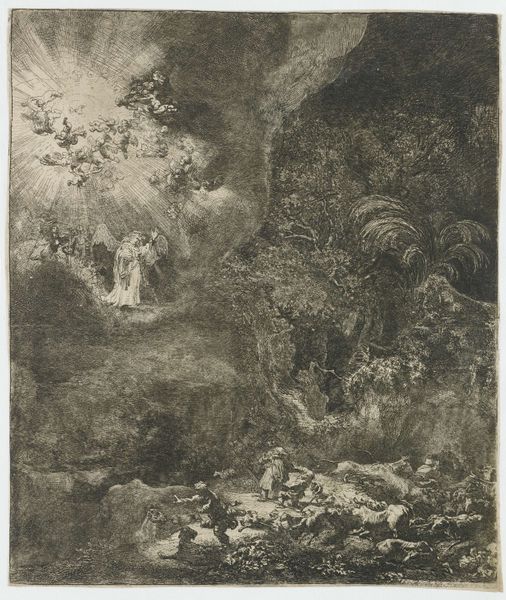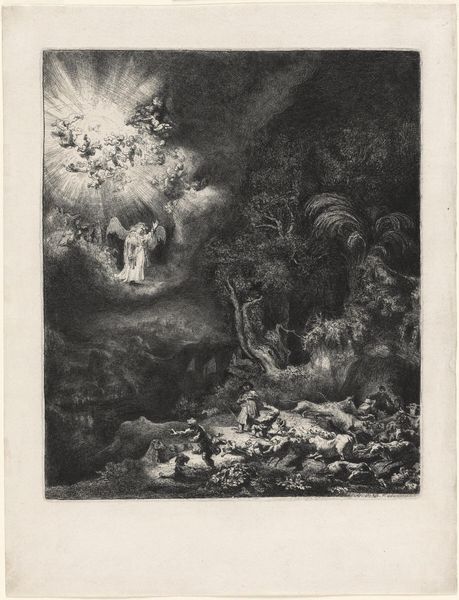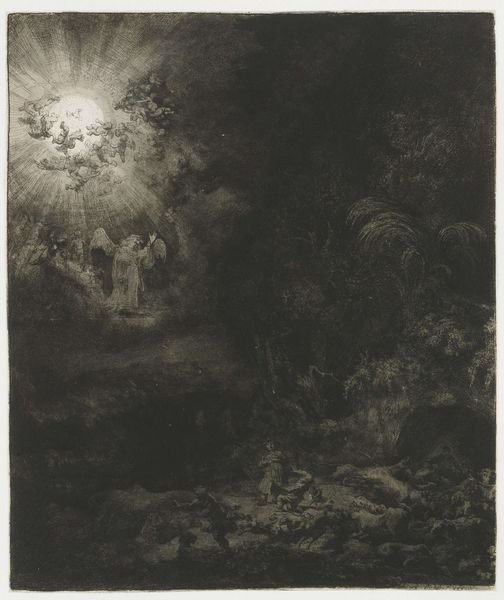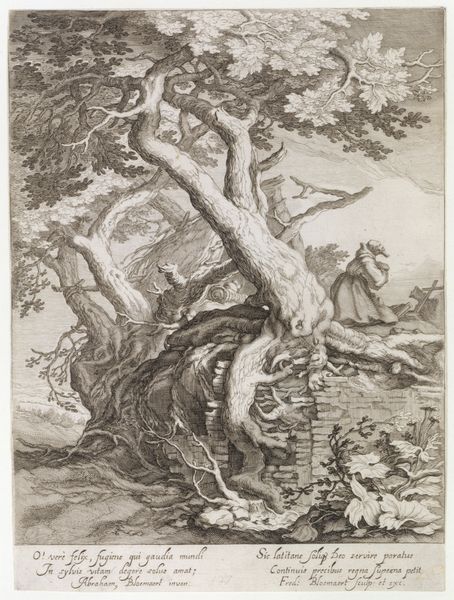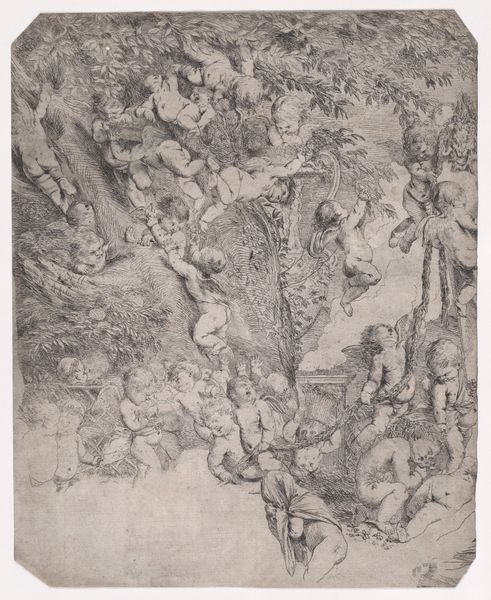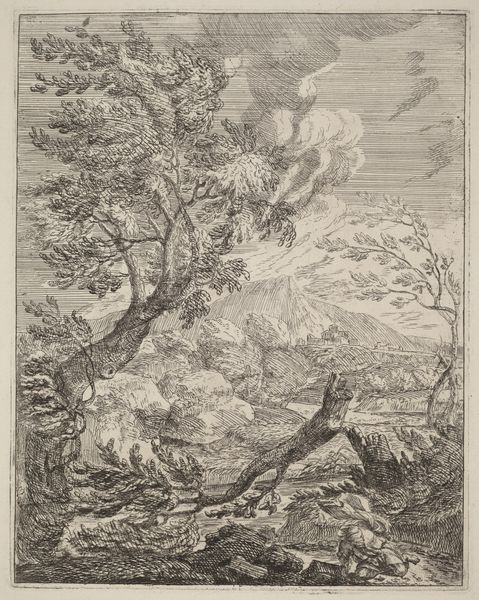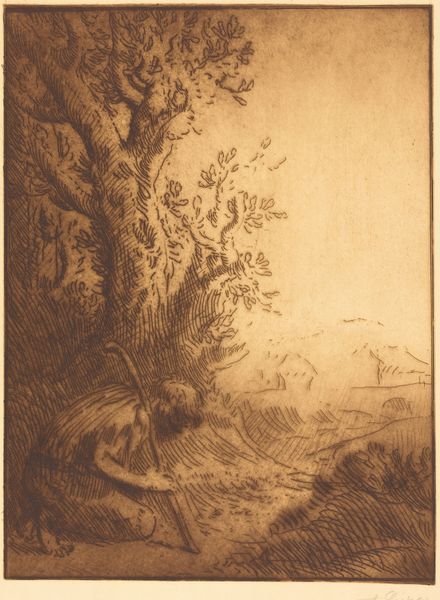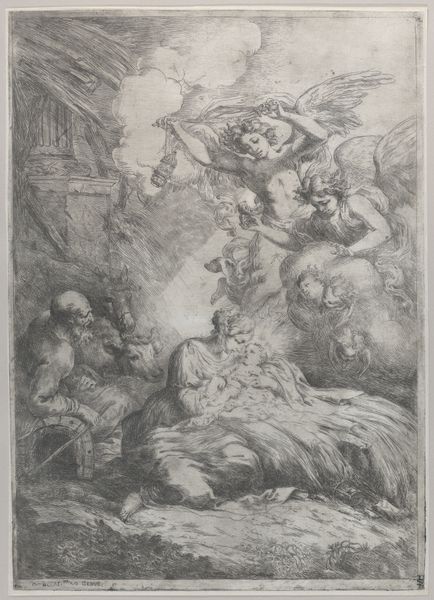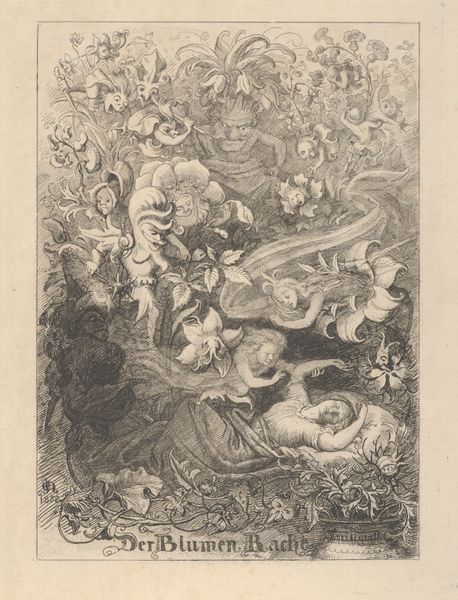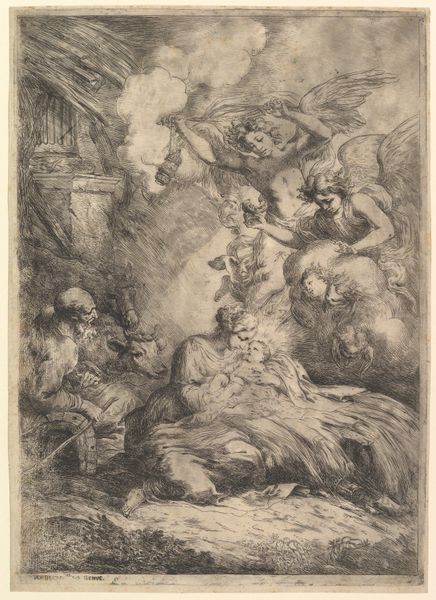
drawing, print
#
pencil drawn
#
drawing
#
toned paper
#
light pencil work
#
ink painting
# print
#
pencil sketch
#
charcoal drawing
#
possibly oil pastel
#
pencil drawing
#
watercolour illustration
#
watercolor
#
angel
Copyright: Public Domain
Editor: Here we have Rembrandt van Rijn’s “The Angel Appearing to the Shepherds” from 1634. It’s a print, currently residing at the Metropolitan Museum of Art. The contrasting light and shadow create such drama. How do you interpret this work, particularly in relation to its materiality? Curator: This etching strikes me as an object of consumption as much as devotion. Consider the accessibility that printmaking offered in the 17th century. Here was a mass-producible image depicting a divine event, circulating within a society increasingly shaped by commerce. Do you think the texture, achieved through the etching process, influences our reading of the sacred here? Editor: I hadn't considered its accessibility in that light. The texture does add to the sense of realism, almost as if we're witnessing the event. It's not the smooth, idealized image you might find in a painting commissioned by the elite. Curator: Exactly. It’s about bringing the divine down to earth, but through a *manufactured* image. Look at the layering, the building up of the image through labor-intensive processes. Each line, each tone is evidence of the artist's, and potentially workshop's, involvement. How does understanding the materiality of printmaking—the acids, the copper plates, the printing press—change how we see the spirituality of the image? Editor: It makes me think about the value we place on "originality." A painting feels like an untouchable object, whereas a print seems more democratized, tied to the physical process of reproduction. The materiality makes it feel like a shared cultural object, produced and consumed. Curator: Precisely! And with each impression, that connection to the "original" degrades, further underscoring the fascinating dance between art, labor, and reproducibility in this piece. I wonder, did looking at its materiality alter your impression? Editor: Definitely. I now see the print not just as a religious scene, but also as a cultural artifact embedded in its time. Thanks, that's really changed my view of it. Curator: And for me, you've highlighted how readily the art market can transform sacred imagery into items for profit, making me reconsider the power dynamics involved in what we define as "art."
Comments
No comments
Be the first to comment and join the conversation on the ultimate creative platform.
